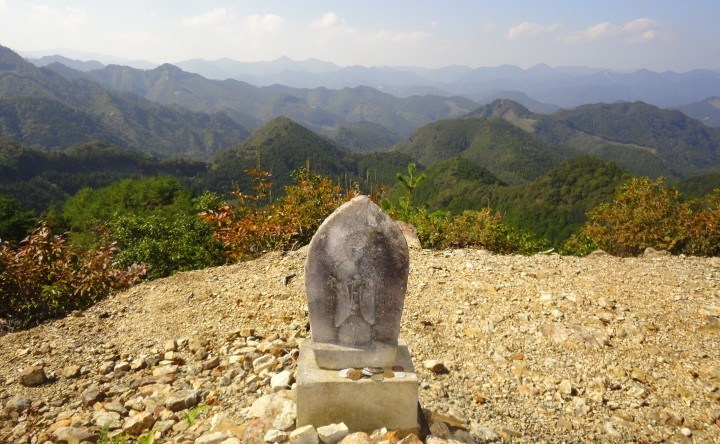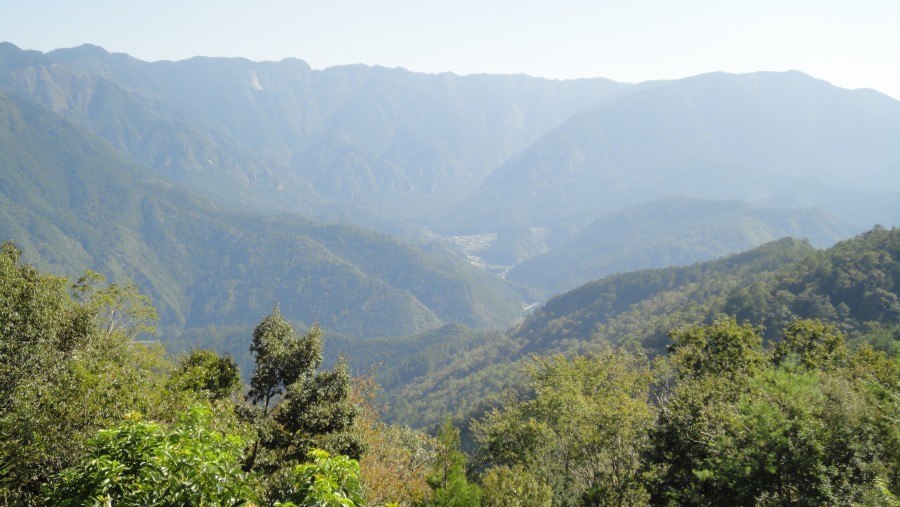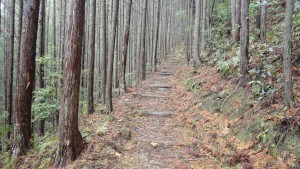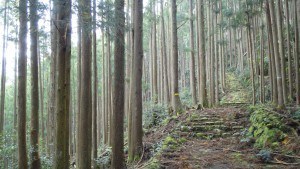Like this post? Help us by sharing it!

Stop, look and listen: an ocean of green-topped hills; nothing in sight, except blue sky, green forest and the moss-matted trail; no sound except, birdsong and your own panting breath; no thought except, why have I not done this before?
The secluded Kumano rises to the south of Kyoto and Osaka. An estimated 3,600 peaks and ridges line its horizon; the heavily-forested hillsides make a great home for wildlife – and the Gods of ancient Japan.
Over a thousand years ago, rumours of spiritual powers lurking in the Kumano reached Kyoto, then the capital of Japan – and one of the biggest cities in the world. Emperors made a month-long trek down from Osaka to beg favours from the Gods.
Over the next centuries, the Kumano creed emerged, a blend of imported Buddhist and indigenous Shinto and Shugendo beliefs. All Japanese society was affected.
Female nuns, called bikuni, went up and downthe country preaching, sparking a Kumano-craze. Long lines of pilgrims, from the poorest rice farmer up, filled the teahouse-lined trails – then known as ari no Kumano-mode – the Kumano pilgrimage of ants.
Three Head Shrines at Hongu, Nachi and Shingu attracted the most visitors. Of these, the two most well-known now are Hongu and Nachi. Hongu hides in the hills; Nachi hugs the coastline – beneath the tallest waterfall in Japan.
The sacred sites at Hongu and Nachi are connected by a two day World Heritage walk through wild woodland. Next week, I`ll tell you about my recent pant along it.
A hike on the Kumano trail is the highlight of the new Emperors` Footsteps small group tour.




